Annals of Environmental Science and Toxicology
Evaluation of the concentration of suspended particles in underground subway stations in Tehran and its comparison with ambient concentrations
Sareh Daneshgar1, Rahim Zahedi2* and Omid Noudeh Farahani3
2Department of Renewable energy and Environmental Engineering, University of Tehran, Tehran, Iran
3Faculty of Computer Engineering and Information Technology, Faran Mehr Danesh University, Tehran, Iran
Cite this as
Daneshgar S, Zahedi R, Farahani ON (2022) Evaluation of the concentration of suspended particles in underground subway stations in Tehran and its comparison with ambient concentrations. Ann Environ Sci Toxicol 6(1): 019-025. DOI: 10.17352/aest.000048Copyright
© 2022 Daneshgar S, et al. This is an open-access article distributed under the terms of the Creative Commons Attribution License, which permits unrestricted use, distribution, and reproduction in any medium, provided the original author and source are credited.Subway lines are responsible for 20% of the total passenger traffic in Tehran. Particulate matter is one of the most important major pollutants in subway stations and increasing their concentration leads to numerous health consequences for passengers and subway employees. This study aims to investigate the concentration of PM10 and PM2.5 in four underground metro stations and compare them with the concentration of these particles in the open air. Seasonal sampling (April 2018 - April 2019) of particulate matters was conducted in the middle months of all four seasons for one week in the middle months of each season at peak traffic times from 8am to 12am, at three locations (entrance, middle, and exit in each station) and also at outside ambient of each station. The results are then compared with the relevant standards. The main sources of suspended particulate matter in the underground subway stations were due to passenger traffic, train piston pressure, floor cleaning, maintenance operations, wheel-rail wear and braking, and the performance of the ventilation system in the subway station. The results of the monitoring measurements in this study showed that the annual average concentrations of PM10 and PM2.5 in the four underground subway stations were 68 μg/m3 and 47 μg/m3 and in the outdoor ambient around these stations were 42 and 29 μg/m3, respectively. Also, this study showed that in the four underground subway stations, the annual average concentrations of PM10 and PM2.5 were 1.5-1.7 times higher than those in the outdoor ambient, respectively.
Introduction
Today, with the over-expansion of cities and the consequent increase of the road’s transportation traffic, people use the public transportation system [1]. Among transportation vehicles, Metro as one of the cleanest and most suitable systems in public transportation is known in big cities because reduces the high volume of traffic in cities, millions of passengers annually move, has good compatibility with the environment and causes reduced energy demand [2].
Daily in Tehran, a Significant number of people use the Metro transportation system and passengers spend a relatively considerable time at the Subway stations. thus, they may be in touch with pollutions such as suspended particles. Facing this type of pollutants can lead to health hazards for Metro passengers and staff. Particle concentration in the environment metro stations is not only affected by the influx of particles from the outdoor even the concentration of these particles is greatly influenced by internal sources at the station. In case of Lack of proper management, the concentration of suspended particles in these environments may be increased and reach to a certain extent dangerous [3]. Infections of the upper part of the respiratory device, cardiac disorders, shortness of breath, bronchitis, pulmonary inflammation, etc [4]. They are among the diseases that result in contact with suspended particles. Based on the reviews conducted by the World Organization of Health (WHO) was determined that with an increase every 10 micrograms concentration of suspended particles, the rate of mortality increased from 1 Up to 3 %.
Ansari, et al. [5] showed that with increasing every 10 micrograms per cubic meter of particulate matter in the air, about 4%, 6%, and 8% risk, respectively increases heart attacks, lung cancer, and mortality. On the other hand, the average concentration of contact with suspended particles for people who use metro systems commute is 8-12 times more compared to taxi drivers and people who travel with other vehicles. Many studies have been done so far in the field of air quality in Closed environments in different countries. Passi, et al. [6] Conducted a study on the air quality of subway stations. They concluded that the weather at subway stations are eight times more polluted than the free environment and also show that each person experiences, 30 minutes with travel by subway and 9 minutes waiting on the metro platform, per diem and this matter increases the amount of confrontation of people with suspended particles compared to the daily presence in urban traffic by 3%.
Yang, et al. [7] informed the exposure level with PM2.5 in metro stations at a level of 3-10 times more than road transport modes. Zhao, et al. [8] achieved similar results. In that study, the average level of exposure of people to PM10 and PM 2.5 at an underground metro station was respectively 5, 10 times more than on the busiest central streets of Stockholm was happening. Measurements taken by Ripanucci, et al. [9] indicated that the mean concentration level of PM10 was on the platform of the stations and in the underground tunnel of Rome was 3.5 times its value at ground level. Figueroa, et al [10] announced a daily average concentration of PM2.5 in the underground metro station of the City of Helsinki 5-6 times more than its value in a free environment.
Cheng, et al. [11] in a study on the concentration of suspended particles and their chemical composition showed that its value in the Taipei metro system was 2/3 times more than its value outdoor. Also, another study by Cheng, et al. [12] entitled Determination concentrations of PM2.5 and PM10 in Taipei metro system has been done. In their study, the average concentration of suspended particles inside metro stations is more than outdoor. And Concentrations of 2.5PM and 10 PM indoors compared to outdoor air is 0.65 - 1.53 and 0.89-1.75, respectively. Kwon, et al. [13] showed spatial distribution of suspended particles PM10 and PM2.5 in Seoul Metro and also showed particle concentrations suspended on the platforms of the underground station are more than its values in the outdoors. They knew the vary in the concentration of suspended particles metro systems due to various monitoring conditions including time Measurements, locations, seasons, equipment, and weather conditions.
Kam, et al. [14] did a study on the Los Angeles subway. In that study, the concentration rate of particles in underground stations is twice the amount of it in the air. Ji, et al. [15] estimated the concentrations of 10 PM and 2.5PM on average (457 and 352 Micrograms per cubic meter respectively in Shanghai metro stations about 2 times more than the amount of its measured outdoor.
In these studies, sampling methods, data analysis, measurement time, and type of study environment were different. Izadi and Mehrabian [16] in their study showed that the concentration of Particles in metro stations depends on several factors such as station length and tunnels, age of trains, the material of wheels and rails, braking mechanisms, train speed and load, passenger population, type of ventilation system, air pressure, the position of stations, filter efficiency, periodic monitoring and inspection, and cleaning. Tehran City has a population of 8 million and about 4 million Floating population of people, daily for work and education from the countryside add to this population [17].
Human exposure to high concentrations of airborne Particulate Matter (PM) can increase adverse health effects. Epidemiological studies have shown that Respirable Particulates (RP) play an important role in the incidence and severity of respiratory diseases and have significant associations with increased risk of cardiopulmonary, lung cancer, and mortality [18]. The health effects of these metals have been shown in many toxicological, occupational, or epidemiological studies [19]. For example, excessive exposure to Fe (with other transition metals) can generate free radicals, resulting in oxidative stress, inflammatory reactions, neurodegenerative diseases, and multiple sclerosis [20]. In Tokyo’s subway system, barium sulfate and barite were identified due to brake shoes. Barnes (2019) measured high levels of Mn in some metro stations and contributed it to friction erosion of rails. Also, dust resuspension was related to passenger activities, the effect of train piston (airflow at the front of the platform), and floor cleaning [21].
Until the end of August 2018, the Tehran metro with four intercity lines and one suburban line in progress was serving passengers, but by the end of 2019, lines 6 and 7 will also be operational [22]. Tehran metro system reduces a large part of the city traffic load and it moves 1.25 million passengers daily. Today, dedicated about 20% of urban public transportation to itself (over a distance of about 10.2km in 35 minutes), the whole length of the underground metro system of Tehran is 102.10 km and includes 140 stations [23]. Trains on weekdays, from 5am to 12 nights work with a frequency of 7-15 minutes [24]. The platforms of the stations have a special ventilation system that enters the outdoor air into the side ventilation system and injects the cleaner air into the platform environment through a vertical channel. In addition, the ventilation system in the tunnels consists of vertical ducts that transport fresh air into the tunnel. Although the braking system is electric, when passing Train from the platform of the line, when slowing down to a complete stop at Stations use pneumatic brakes.
This study was performed to evaluate the concentrations of 10 PM and 2.5PM in four underground metro stations (Azadi, Enghelab, Tohid, and Vali Asr (in Tehran and comparison with the concentrations of these particles in the outdoor. Considering hazards associated with exposure to particulate matter, and absence study about the levels and nature of these particulates in Tehran’s subway stations, this research aimed to measure PM2.5, and PM10 and their elemental composition in the indoor air of Tehran subway stations.
Methodology
In this study, seasonal concentrations of 10 PM and 2.5PM from April 2018 to April 2019 in the subway stations of the city Tehran and the space outside the station at street level, are measured and evaluated. For this purpose, four stations of the Tehran metro system named Vali-e-Asr (VA), Enghelab (EN), Tawhid (TO), and Azadi (AZ) were selected for sampling suspended particles. The criterion for selecting stations was based on the type of ventilation system, passenger population, platform depth from street level, and position of busy streets around the stations. Measurement was done in all days of the week, one month in each season from April 2018 to April 2019 for 4 hours a day (8am -12 noon) each time for15minutes, at three different points (entrance, Intermediate, and output) from the platform of each of the desired four underground stations.
To compare air quality in the environment inside metro stations with street-level air, the concentration of PM2.5 was measured outside the station and at a distance of 1.5 meters from the ground, near the bus or taxi station. For experimenting on Suspended particle DustTrak model 8250 with a capacity of 1.7 liters per minute, including two types of nozzles with sizes of 2.5 and 10 microns, made in the United States, were used. This device is operating with the method of laser Scattering for direct counting of particles and measuring the concentration of ambient particles PM2.5, PM10 [25]. The device had a calibrator and was calibrated in less than 2 minutes. a flow meter to adjust the input flow to the device and its memory were for recording 33,000 data. Measurement was done at a height of about 1.5-2 meters above the ground, in the Respiratory area of individuals.
In this study, the effect of parameters such as Seasonal changes, variations based on different sampling times, number of passengers population, and type of ventilation system on particle concentration Suspended was examined. Statistical analysis of parameters affecting Emission of suspended particles in underground metro stations with the Use of descriptive statistics, one-sample T-test, and regression Logistics (generalized) was performed. The experiment of torque correlation coefficient (Pearson) to determine the relationship between the concentration of Particles inside the subway station and their concentration outside the station was used. In Figure 1 lines of the metro system of Tehran and the location of four underground stations of study are shown. Table 1 shows the characteristics of Tehran metro stations.
Result and discussion
Results of measurements performed at stations of Vali-Asr (VA), Enghelab (EN), Tohid (TO), and Azadi (AZ) During different seasons are presented in Table 1. As can be seen in Table 1, the seasonal average of concentrations PM2.5 at Vali-e-Asr (VA), Enghelab (En), Tohid (To), and Azadi (Az) stations, during different seasons were 68, 76, 69, and 62 micrograms per cubic meter, respectively. The concentration of PM2.5 in all stations was above the standard defined values of particles indoors (25 μg/m3) and also Seasonal average of concentrations of PM10 in VA, En, to, Az stations, are 73,89,77 and 68 micrograms cubic meters, respectively. In other words, at the monitored stations the average concentration of suspended particles PM10 is also higher than the standard particle size indoors in all stations was (50μg/m3). In Table 2 Seasonal average concentration of Suspended particles of environment air out of the station is also provided. As can be seen, the air quality of underground subway stations is more undesirable in Compared to the air of surface of Tehran, such as the Concentration ratio of PM10 and PM2.5 in the environment of these Metro stations has been about 1.5-1.7 times, respectively, more compared to air in the city.
At the surface of the street with attention to open space and ventilation and natural air movement through wind flow, the possibility of dispersion and focus of particles was less, but in Underground subway stations for a variety of reasons, including Being lower from the ground, moving air artificially and with the use of air conditioners and the unsuitability of their performance is far more. In addition, the results showed that the average concentration of Suspended particles PM2.5 and PM10 at the beginning of the platform and the output of the station is far more than other measuring points. Train arrival getting into the station very quickly and creating a tail position, existence of train stations exit, near crowded and busy streets, Lack of proper cleaning of the floor and walls of the station and entry and exit of Passengers to the station are effective factors in increasing the concentration of Suspended particles at these two sampling points.
Furthermore, the concentration of suspended particles in subway stations is Significantly affected by the concentration of suspended particles that through ventilation systems, escalator station tunnels, and corridors are entering the subway station. Examinations revealed that production Sources of suspended particles in the subway stations Tehran city includes items such as wheel and rail contact, train brakes, transfer of particles from the street surface, entry and exit of passengers, passing trains on the rails, the effect of train piston pressure, cleaning of stations and ventilated systems.
Figure 2 shows the average concentrations of PM2.5 and PM10 at underground Metro stations of Tehran for the summer of 2018. According to this figure, the average concentration of PM2.5 and PM10 in summer in the mentioned metro stations was respectively 40 -68,42-74 micrograms per cubic meter, as it is observed the average concentration of PM2.5 in the season of Summer was higher than the EPA standard in all station. However, the average concentration of PM10 in some stations was higher than the standard value, and in some others, it was less than this value. Also, the average concentration of 2.5PM and 10PM at the Enghelab station is 68 and 42 micrograms per cubic meter and has the greatest distance with the standard value.
Figure 3 shows the average concentration of PM2.5 and PM10 in Tehran metro stations in the fall 2018 season. In this season the average concentration of PM2.5 and PM10 at metro stations was respectively,53 -104 and 52-130 micrograms per cubic meter. In this figure, the number of Concentrations of PM2.5 and PM10 in autumn in all stations were higher than the EPA standard. Concentration rate of PM2.5 and PM10 at Valiasr station with average concentrations of 104 and 130 Micrograms per cubic meter and it have the maximum distance to the standards of indoor limit.
Figure 4 shows the average concentration of 2.5PM and 10 PM in four Metro stations in Tehran for winter 2018. The average concentration PM2.5 and 10 PM in this season at underground metro stations are respectively 106-71, and 154-84 micrograms per cubic meter. According to this figure, the average concentration of 2.5PM and 10 PM in winter in all stations exceeded EPA standard values.
Also, the average concentration of 2.5PM and 10 PM at the Tohid station was 104 and 154 micrograms per cubic meter, respectively and They have the longest distance with the standard limit. Figure 5 shows the average concentrations of 2.5PM and 10 PM in four underground metro stations of Tehran city in the spring of 2018. In this season the average concentration of PM2.5 and PM10 in this metro station was 115-54 and 144-84 micrograms per cubic meter, respectively. In this figure, the average concentration of PM2.5 and PM10 in Spring was higher than the EPA standard in all stations. The average concentration PM 2.5 and PM10 in Azadi station was 115 and 144 micrograms per cubic meter, respectively and They have the greatest distance with the standard values of indoor environments. Various studies on the effect of seasonal changes on concentration suspended particles diffusion have occurred in subway stations.
By comparing these values, it can be concluded that the studied subway stations in Tehran in terms of concentration of PM10 compared to Subway stations in Taipei and Los Angeles were more polluted but in comparison with other countries, it has a more favorable situation. Also, the average concentration of PM2.5 on the platform of the desired stations was in the range of 36-228 μg / m3. Comparison of these values shows that the studied subway stations of Tehran in terms of concentration of PM2.5 in comparison with the Hong Kong, New York, and Sydney subways, were more polluted, but compared to other countries, the situation is more favorable. Table 3 shows the concentration of suspended particles in metro systems of different cities of the world including Taipei, Berlin, Los Angeles, Boston, Prague, Rome, Sydney, Budapest, Seoul, and Helsinki.
Conclusion
In this study, seasonal concentrations of PM10 and PM2.5 from April 2018 to April 2019 in underground metro stations of Tehran city and the outside space of the station at the street were measured and reviewed. For this purpose, four stations of the metro system of Tehran with the names of Vali-e-Asr (VA), Enghelab (EN), Tohid(TO), and Azadi (AZ) were selected for sampling suspended particles. Sampling on all days of the week, one month in each season at intervals of one year for 4 hours in a day (8 am -12 noon), at three different points (input, middle, and output) from the platform of each of the four Intended stations was done. Results of this study showed that the average concentration of PM2.5 in the stations of Vali-e-Asr, Enghelab, Tohid, and Azadi during different seasons were 68, 76, 69, and 62 micrograms per cubic meter, respectively. The concentration of PM2.5 in all stations was higher than the standards for the internal environment (25µg/m3). The average concentration of PM10 in the mentioned stations was 73, 89, 77, 67 micrograms per cubic meter respectively. In other words, the average concentration of particles PM10 in all monitored stations was higher than the standard limits of indoor (50µg/m3).
The results show that the average concentration of particles at the beginning of the platform and the output of the station are much higher than its values in the middle points of the platform of stations. Also though the average concentration of Particle in underground metro stations was higher compared to outside air, the average concentration of particles was lower than its standard value on the outside. The average value of the concentration of Suspended particles in underground metro stations was about 1.5-1.7 times more than Its value in the outside environment. The results show that the underground subway station of Tehran is heavily contaminated with fine particles. Many particles in underground subway stations Infiltrate into the platform of underground stations by ventilation systems installed at street level through the exhaust of motor vehicles and increase the concentration of fine suspended particles in subway stations. In free environment due to the possibility of ventilation and the natural movement of air and due to the velocity of the Wind flow allows more particles to disperse, resulting in lower concentrations of them, but in underground stations for several reasons Including being below ground level, moving air through Artificial and using air conditioners and improper performance, the concentration of particles was much higher.
It was also identified the most important reasons for the high concentration of particles in autumn and winter are High traffic load on the street level, population density, passengers at stations, and atmospheric stability conditions in the outdoor environment. The results of this study showed that the performance of the air conditioner system in underground metro stations in Tehran for Reducing the concentration of suspended particles is not desirable and is mainly only played a role in regulating temperature and humidity conditions of the station environment. Table 3 shows the concentration of suspended particles in metro systems of different cities of the world including Taipei, Berlin, Los Angeles, Boston, Prague, Rome, Sydney, Budapest, Seoul, and Helsinki, and the results of the present study are compared. The reason for the difference in the number of concentrations of suspended particles in subway systems can be due to wheel wear and rails or curvature of lines, or differences in braking systems. Also, the ventilation systems of the old subways, compared to newer systems are weaker in removing large amounts of suspended particles. The average rate of PM10 in these stations is about 407- 24μg/m3 (from low to high).
Due to the fact that the design of subway ventilation systems is such that the required air is supplied from the outside environment, therefore failure to install the particulate filter or low performance of filters installed on air suction fans from outside causes suspended particles to enter the station. Effective measures to reduce the concentration of particulate matter of the inlet air into the air conditioner are the use of appropriate filters, improving ventilation systems and fans in the station, reviewing environmental monitoring systems in stations, tunnels, and metro cabins, proper and regular cleaning of floors and walls of stations and tunnels, periodic monitoring of the ventilation system and air conditioning filters by metro officials and especially design and use of platform separation systems at the subway station to reduce the concentration of pollutants and prevent them to enter the station platforms.
This study provides the first set of ranges of the concentration of PM reported at the indoor air of Tehran’s subway system which can be used for comparative purposes in future studies. Such useful scientific evidence is required by local and federal authorities to continue to improve the quality of air to which commuters are exposed in Tehran City.
- Zahedi R, Daneshgar S (2022) Exergy analysis and optimization of Rankine power and ejector refrigeration combined cycle. Energy 240: 122819. Link: https://bit.ly/3qap9uQ
- Meyer JR, Kain JF, Wohl M (2013) The urban transportation problem. Harvard University Press. Link: https://bit.ly/3MVhpGL
- Han J, Kwon Sb, Chun C (2016) Indoor environment and passengers’ comfort in subway stations in Seoul. Buil Environ 104: 221-231. Link: https://bit.ly/3w7Mi4Z
- Zahedi R, Ghorbani M, Daneshgar S, Gitifar S, Qezelbigloo S, et al. (2022) Potential measurement of Iran's western regional wind energy using GIS. J Clean Prod 330: 129883. Link: https://bit.ly/3JfQDqr
- Ansari M, Ehrampoush MH (2019) Meteorological correlates and AirQ+ health risk assessment of ambient fine particulate matter in Tehran, Iran. Environ Res 170: 141-150. Link: https://bit.ly/3i8vu5E
- Passi A, Nagendra SS, Maiya M (2021) Characteristics of indoor air quality in underground metro stations: A critical review. Build Environ 107907. Link: https://bit.ly/3CKk69A
- Yang F, Lau CF, Tong VWT, Zhang KK, Westerdahl D, et al. (2019) Assessment of personal integrated exposure to fine particulate matter of urban residents in Hong Kong. J Air Waste Manag Assoc 69: 47-57. Link: https://bit.ly/3KIEZVa
- Zhao L, Wang J, Gao OH, Yujing X, Ran J, et al. (2017) Evaluation of particulate matter concentration in Shanghai’s metro system and strategy for improvement. Transp Res D Transp Environ 53: 115-127. Link: https://bit.ly/3w8cHiT
- Ripanucci G, Grana M, Vicentini L, Magrini A, Bergamaschi A, et al. (2006) Dust in the underground railway tunnels of an Italian town. J Occup Environ Hyg 3: 16-25. Link: https://bit.ly/3Jx3fd3
- Figueroa-Lara J, Murcia-González JM, García-Martínez R, Romero-Romo M, Torres Rodríguez M, et al. (2019) Effect of platform subway depth on the presence of Airborne PM2. 5, metals, and toxic organic species. J Hazard Mater 377: 427-436. Link: https://bit.ly/34OYxbo
- Cheng YH, Lin YL (2010) Measurement of particle mass concentrations and size distributions in an underground station. Aerosol Air Qual Res 10: 22-29. Link: https://bit.ly/34L0ZPZ
- Cheng YH, Lin YL, Liu CC (2008) Levels of PM10 and PM2. 5 in Taipei rapid transit system. Atmos Environ 42: 7242-7249. Link: https://bit.ly/3waT21T
- Kwon SB, Jeong W, Park D, Kim KT, Cho KH (2015) A multivariate study for characterizing particulate matter (PM10, PM2. 5, and PM1) in Seoul metropolitan subway stations, Korea. J Hazard Mater 297: 295-303. Link: https://bit.ly/3q99YSL
- Kam W, Delfino RJ, Schauer JJ, Sioutas C (2013) A comparative assessment of PM 2.5 exposures in light-rail, subway, freeway, and surface street environments in Los Angeles and estimated lung cancer risk. Environ Sci Process Impacts 15: 234-243. Link: https://bit.ly/3KSyWxD
- Ji W, Liu C, Liu Z, Wang C, Li X (2021) Concentration, composition, and exposure contributions of fine particulate matter on subway concourses in China. Environ Pollut 275: 116627. Link: https://bit.ly/3qdkuZ1
- Izadi T, Mehrabian AM, Ahmadi G, Abouali O (2021) Numerical analysis of the mirco-particles distribution inside an underground subway system due to train piston effect. Journal of Wind Engineering and Industrial Aerodynamics 211: 104533. Link: https://bit.ly/3MYoBBV
- Daneshgar S, Zahedi R (2022) Optimization of power and heat dual generation cycle of gas microturbines through economic, exergy and environmental analysis by bee algorithm. Energy Rep 8: 1388-1396. Link: https://bit.ly/3Ig03Rv
- Zhang Y, Chu M, Zhang J, Duan J, Hu D, et al. (2019) Urine metabolites associated with cardiovascular effects from exposure of size-fractioned particulate matter in a subway environment: A randomized crossover study. Environ Int 130: 104920. Link: https://bit.ly/3ws352X
- Loxham M, Nieuwenhuijsen MJ (2019) Health effects of particulate matter air pollution in underground railway systems–a critical review of the evidence. Part Fibre Toxicol 16: 1-24. Link: https://bit.ly/3tZo6yZ
- Gonet T, Maher AB, Nyirő-Kósa I, Pósfai M, Vaculík M, et al. (2021) Size-resolved, quantitative evaluation of the magnetic mineralogy of airborne brake-wear particulate emissions. Environ Pollut 288: 117808. Link: https://bit.ly/363oJj1
- Barnes P, Wallace LM, Saffer DM, Pecher I, Petronotis KE, et al. (2019) Site U1520. IODP Expedition 375 Determining links between structures, fluid flow, and the state of stress of the Hikurangi Subduction Margin, New Zealand. Link: https://bit.ly/3IfqAyq
- Zahedi R, Rad AB (2021) Numerical and experimental simulation of gas-liquid two-phase flow in 90-degree elbow. Alexandria Engineering Journal 61: 2536-2550. Link: https://bit.ly/3qwCeyX
- Monajem S, Nosratian FE (2015) The evaluation of the spatial integration of station areas via the node place model; an application to subway station areas in Tehran. Transp Res D Transp Environ 40: 14-27. Link: https://bit.ly/3id6hH6
- Kamani H, Hoseini M, Seyedsalehi M, Mahdavi Y, Jaafari J, et al. (2014) Concentration and characterization of airborne particles in Tehran’s subway system. Environ Sci Pollut Res Int 21: 7319-7328. Link: https://bit.ly/36pptyD
- Feenstra B, Papapostolou V, Hasheminassab S, Zhang H, Boghossian BD, et al. (2019) Performance evaluation of twelve low-cost PM2. 5 sensors at an ambient air monitoring site. Atmos Environ 216: 116946. Link: https://bit.ly/3COrgta
- Moeinossadat SR, Ahangari K (2019) Estimating maximum surface settlement due to EPBM tunneling by Numerical-Intelligent approach–A case study: Tehran subway line 7. Transportation Geotechnics 18: 92-102. Link: https://bit.ly/3tfoOc5
Article Alerts
Subscribe to our articles alerts and stay tuned.
 This work is licensed under a Creative Commons Attribution 4.0 International License.
This work is licensed under a Creative Commons Attribution 4.0 International License.
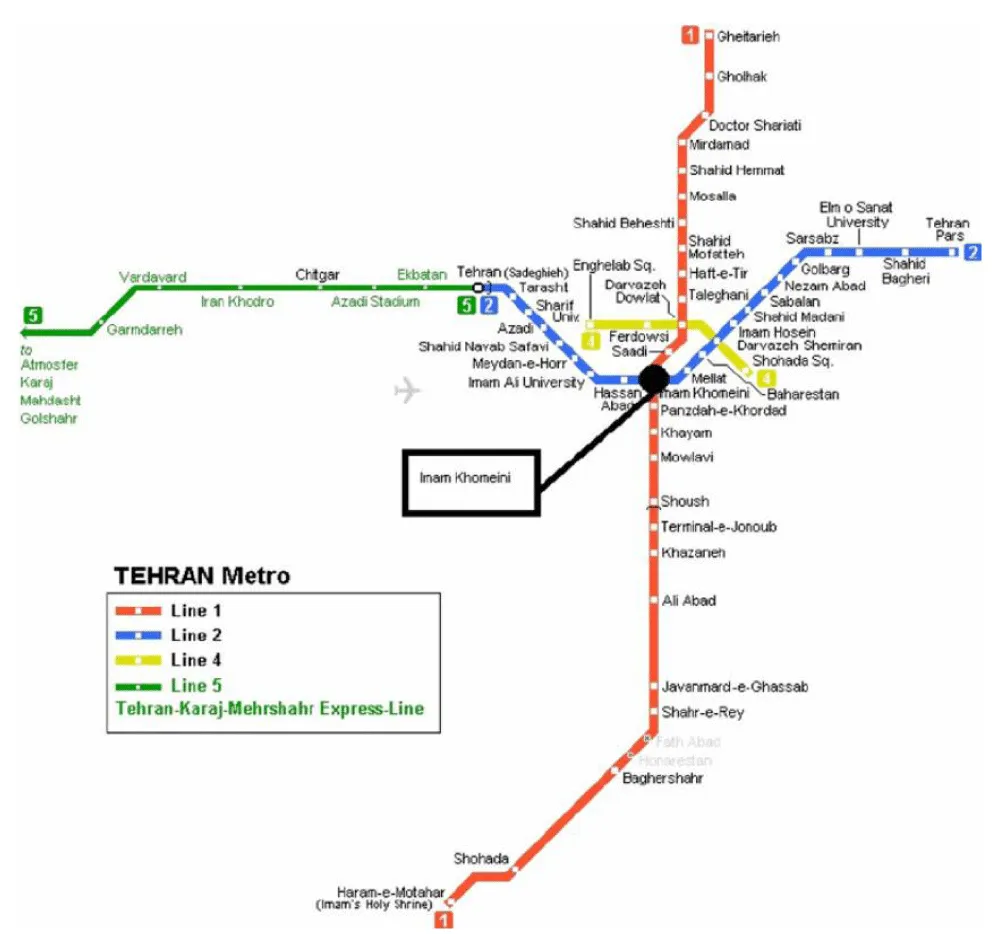
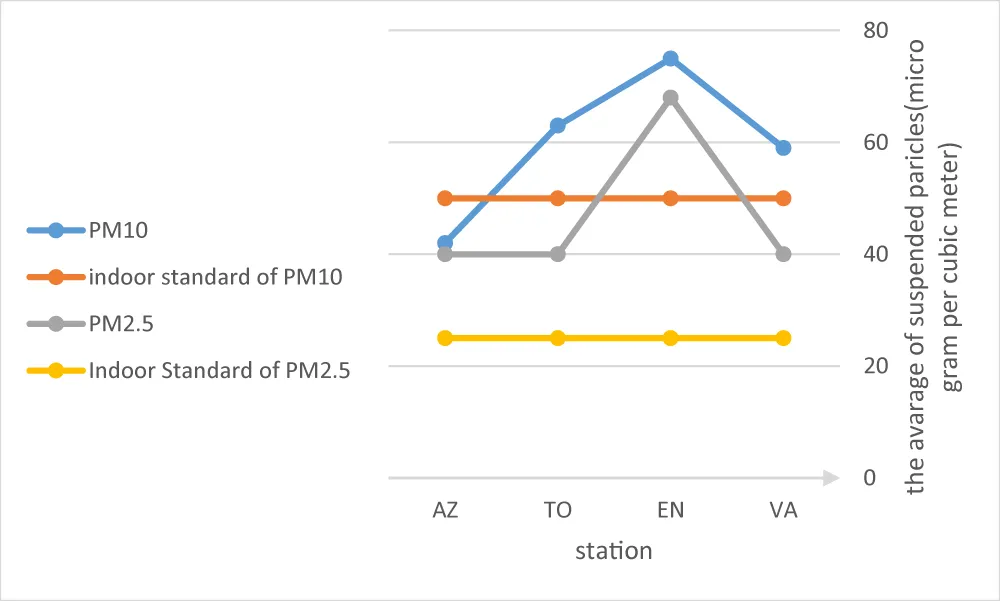
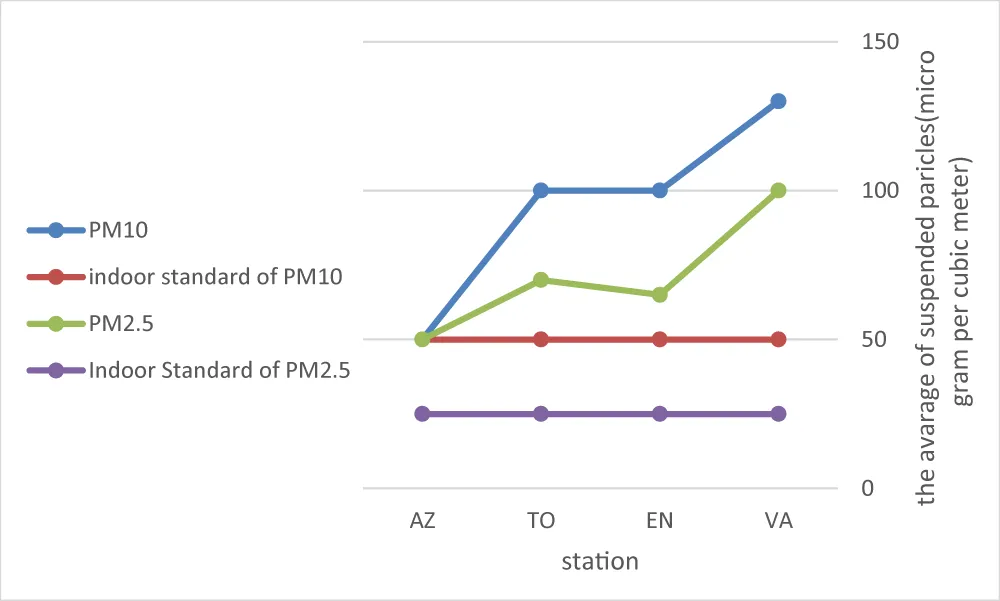
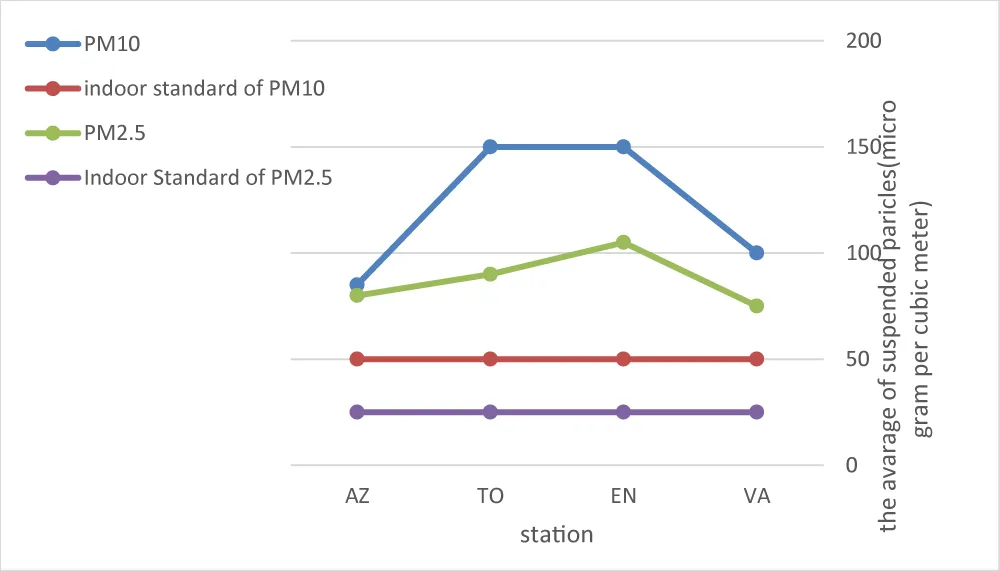
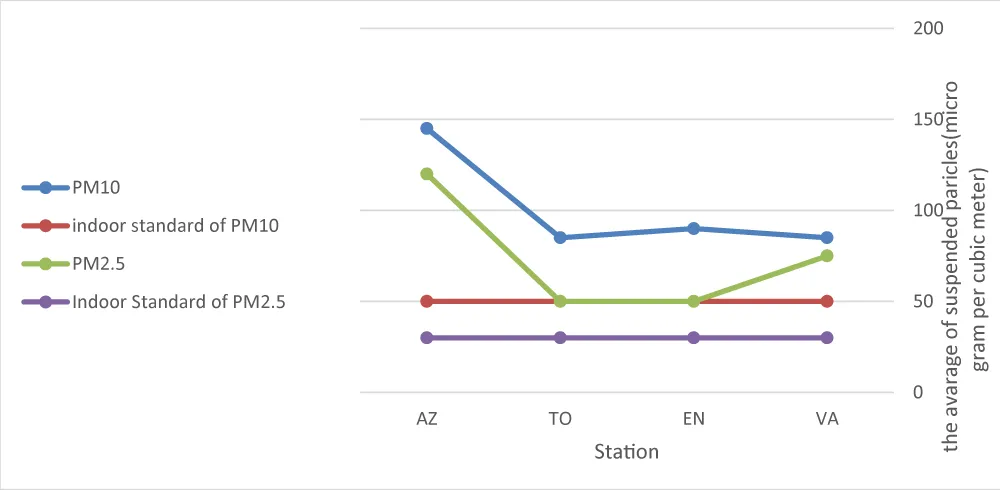

 Save to Mendeley
Save to Mendeley
